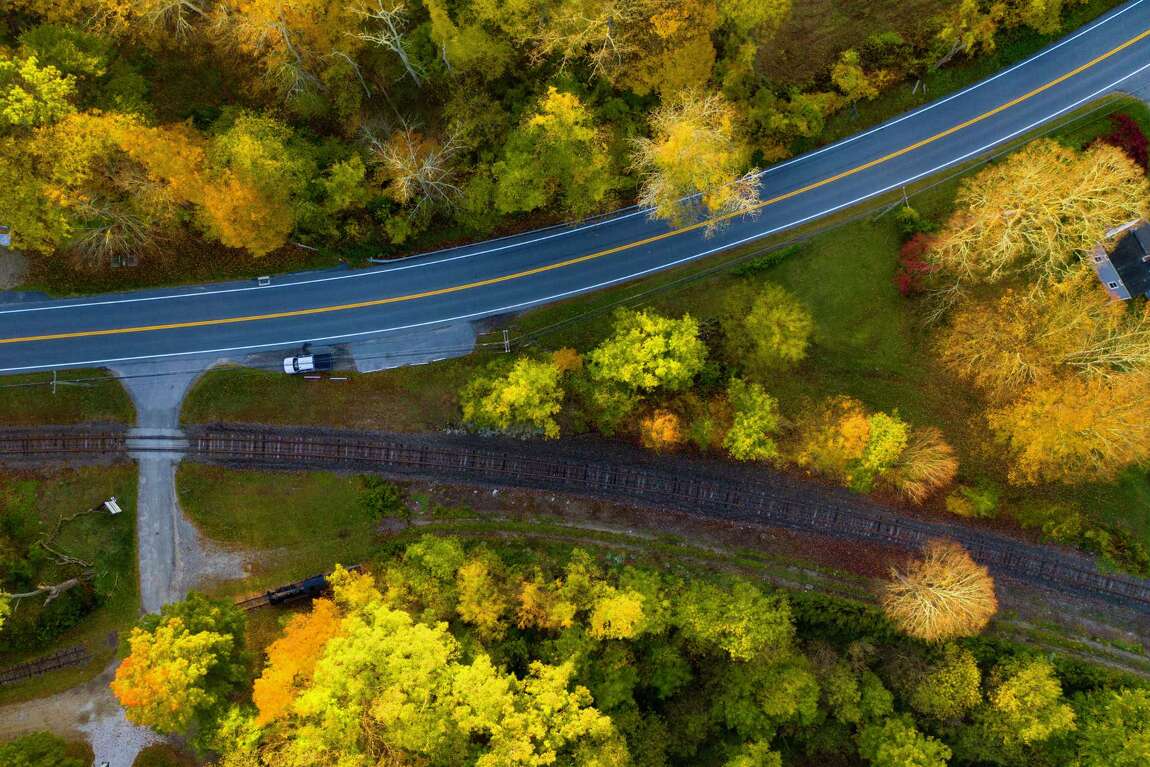How CT is using drones to moderate traffic
SOURCE: CTINSIDER.COM
NOV 30, -0001

Several years ago, Vitalij Staroverov bought a drone for his son, for Christmas.
It was a small thing, one that could fit in the palm of his hand, but Staroverov saw potential in the technology.
“I thought, ‘Maybe I can explore it a bit more just to find out how this can be used in different areas,’ ” he said.
Staroverov is an engineer with the state Department of Transportation and, over the years, he’s seen the department’s use of drones — no longer just toys but tools used by professionals — expand considerably.
On Tuesday, the state senate approved by a vote of 34 to 2 a transportation bill that would, among other things, formalize the use of drones as a way to mitigate traffic in the state.
The DOT uses drones to inspect infrastructure, analyze traffic at intersections and more. However, it’s remained a modest program. Staroverov said there are now 13 drones and about the same number of certified drone pilots employed by DOT, himself among them.
“For years now, we've used drones for photo and video documentation of intersections of traffic in general,” Staroverov said. “We use it for some minor bridge inspections for bridge deck inspection and photography, to make an assessment of how many cracks we have and, based on the data that we gather, then come up with a most beneficial solution for that repair.”
While DOT does not use drones for the specific purpose of traffic mitigation, state Sen. Will Haskell, D-Westport, said that is the ultimate effect.
“Drivers in my neck of the woods spend many, many hours sitting in traffic unnecessarily,” said Haskell, who sponsored the transportation bill. “We’re trying to resolve those traffic jams.”
He called the bill a “meaningful step forward in the right direction.”
Staroverov pointed to a Michigan study that showed significant savings in both cost and time when drones are used.
Without drones, Staroverov said the Michigan study found “they would use two people for eight hours, and they would pay them an average $100 per hour.” On average, the work of bridge inspection would require the closure of two traffic lanes, which snarls traffic and itself costs money. The total cost to the department would be about $4,600 per day, Staroverov said.
“So that's traffic impact, and the cost to the department,” he said.
With drones, the work was cheaper and traffic was lighter.
“For the total inspection, maybe it will be about $1,200,” Staroverov said. “So there is a significant cost savings not only from a financial standpoint, but also from blocking the highway and keeping drivers on the road longer.”
The Connecticut State Police is also using drones as a way to minimize impact on traffic.
Sgt. Mark DiCocco, a collision reconstruction expert working with the state police’s Collision Analysis and Reconstruction Squad, said drones have been used more than 350 times since they were first employed in 2019.
He said the process is called “photogrammetry.”
After a collision, a drone operator — the state police currently has six drones — will use the technology to take overlapping photos to create both two- and three-dimensional images of a crash site.
“This is done by identifying common points in multiple photographs and applying photogrammetry techniques to generate a point cloud,” DiCocco explained.
This allows DiCocco and his colleagues to digitally reconstruct a scene far faster than they could using traditional methods, and with less impact on traffic. A drone “captures the required data more efficiently with accuracy equal to or better than traditional methods and at a lower cost and with less risk to the on-scene detectives.”
Traditional methods require more personnel and take far more time, Haskell said.
“They typically have to deploy multiple law enforcement officers to survey all the damage,” he said. “Drones are doing that same amount of work collecting data in just 15 minutes.”

Written By
Jordan Fenster is an award-winning reporter, podcaster and children's book author. He serves as digital products editor at Hearst Connecticut Media and lives in Stamford with his dog, cat and three daughters.
LATEST NEWS
WHAT'S TRENDING


Data Science
5 Imaginative Data Science Projects That Can Make Your Portfolio Stand Out
OCT 05, 2022

Coventry University expert explains what Amazon drone deliveries means for jobs and the price of a package
SOURCE: HTTPS://WWW.COVENTRYTELEGRAPH.NET/
NOV 02, 2023
This New Autonomous Drone for Cops Can Track You in the Dark
SOURCE: HTTPS://WWW.WIRED.COM/
SEP 26, 2023
Tamil Nadu government approves farm mechanisation subsidy for Garuda Aerospace drones
SOURCE: HTTPS://AGRICULTUREPOST.COM/
SEP 25, 2023
The Future Of Biomedical Transport: Drones At The Service Of Health
SOURCE: HTTPS://WWW.EMERGENCY-LIVE.COM/
AUG 25, 2023
Groundbreaking Drone Flights with Radiation Detection Pave the Way for Improved Safety on Nuclear Sites
SOURCE: HTTPS://DRONELIFE.COM/
AUG 11, 2023
Drone with sticky patches studies biodiversity by bumping into trees
SOURCE: HTTPS://WWW.NEWSCIENTIST.COM/
JUL 13, 2023




